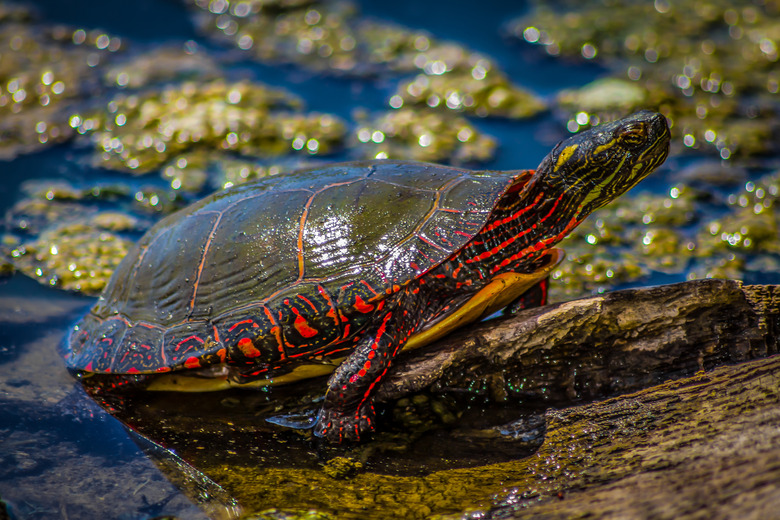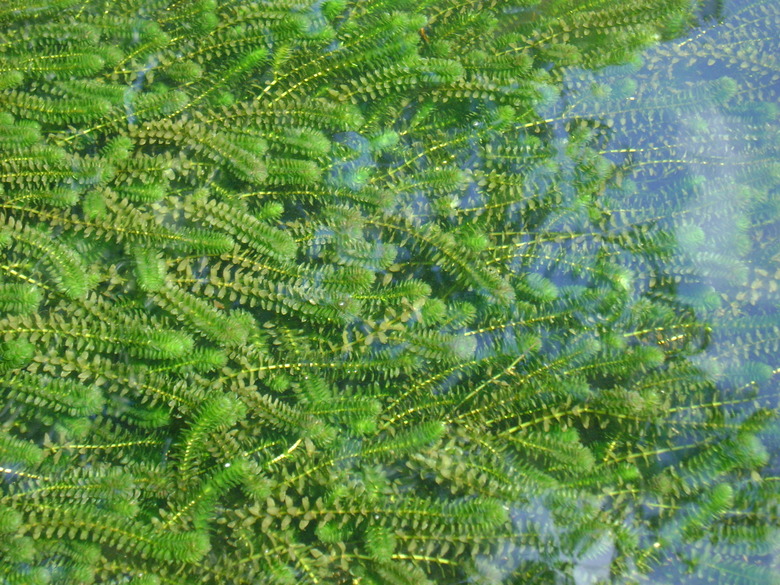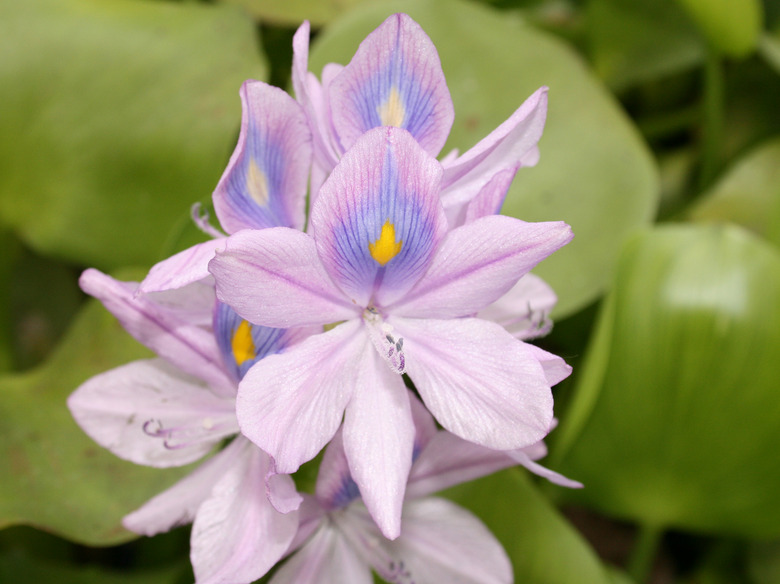What Plants Do Painted Turtles Eat?
Painted turtles (Chrysemys picta) have an omnivorous diet consisting of both plant and animal material. The turtles, identifiable by their bright yellow and red colors, are mainly carnivorous when young and prefer crustaceans, fish and aquatic insects.
As they mature, their diet evolves into a preference for diverse plants, though adult painted turtles continue to eat animal matter, including carrion.
Aquatic Plants for Painted Turtles
- **Waterweed:** Also called anacharis, waterweed (Elodea canadensis) is
hardy in USDA zones 4 to 10. The submersed leafy plant is widely used in aquariums because it's easy to care for and helps in oxygenating the water. Waterweed is invasive in the wild because it grows quickly and is hard to manage.
- **Common Duckweed:** Hardy in zones 4 to 10, common duckweed (Lemna minor) grows on
the surface of ponds. The plants with small green leaves grow in colonies and, if left uneaten by turtles, ducks or other animals, they can cover the pond and starve the water of oxygen.
- **Water Lilies:** Water lilies (Nymphaea spp.) have large, oval leaves that
float on the surface of the water and showy, whorled flowers in a multitude of colors. Hardy water lilies are found in zones 3 to 11, while tropical water lilies thrive in zones 9 to 11. The flowers of the American white water lily (Nymphaea odorata) are quite fragrant.
- **Water Hyacinth:** While a favorite of painted turtles, water hyacinth (Pontederia crassipes) is considered one of the most difficult-to-control
aquatic weeds. Common in zones 8 to 11, water hyacinths have bladders that keep the thick leaves afloat. Lavender flowers grow on a single stalk. Note that the bulbs of the hyacinths that grow on land are poisonous and should not be fed to turtles.
- **Algae:** A broad term referring to a number of genera, algae vary
from single-celled organisms to enormous multicellular forms, like kelp. Generally speaking, the algae that grow in ponds and provide food for turtles are single celled and frequently float on the surface of water or are the filamentous algae that grow in mats.
Garden Plants for Captive Turtles
If you're feeding a pet turtle, keep in mind that young turtles are mostly carnivorous and need more meat than vegetables in their diet. Turtles in captivity depend on you to provide proper nutrition.
If you choose to supplement or replace your adult turtle's diet of commercial turtle food, you'll need to feed them a healthy diet supplemented by once-weekly animal matter, like blood worms or brine shrimp. Overfeeding is one of the most common mistakes turtle owners make. If your turtle develops cloudy skin or seems lethargic, an incomplete diet may be to blame.
Warning
If your turtle develops cloudy skin or seems lethargic, an incomplete diet may be to blame. Keep in mind that young turtles are mostly carnivorous and need more meat than vegetables in their diet.
What common foods can you feed to a turtle?
Most garden vegetables are suitable for your turtle. Provide a varied diet of collard and mustard greens, red leaf lettuce, romaine, squash, kale, escarole and endive, but avoid poisonous plants and citrus.
Vegetables high in oxalates, like broccoli, carrots, spinach, parsley and rhubarb, should be fed sparingly. Dandelions are high in oxalic acid, but they're also high in calcium, which is a mineral turtles need. Feed them younger dandelion leaves, which are lower in oxalic acid.
Feed an adult captive painted turtle every two or three days. Feeding them more frequently may cause obesity. Put the food in a container rather than dumping it in the turtle's habitat. Turtles are messy eaters, and you'll have to clean the habitat more often if you don't.


